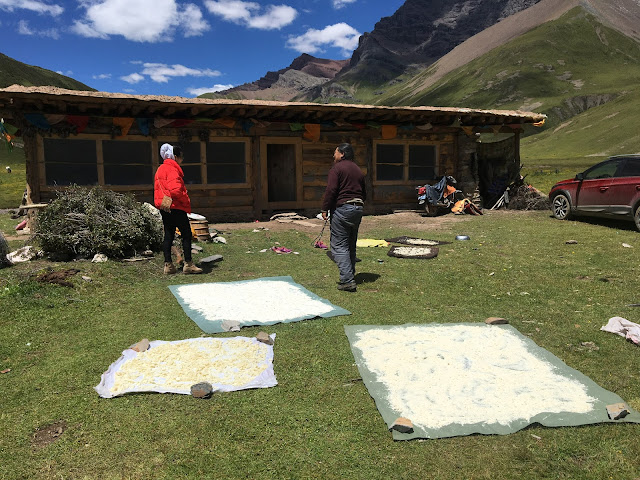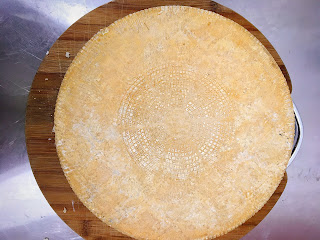After spending most of the year in Mongolia and Tibet, I decided to come to Italy to attend the festival the Slow Food puts on every 2 years. It is by far the most important international cheese event, the world cheese awards is nonsense. The theme this year was “Natural is possible” and it highlighted cheeses made with natural starter cultures. These are usually made by clobbering raw milk or using whey from a batch to ferment the next days cheese. Italy probably has the largest amount of cheeses made with natural starters.
Trevor Warmedahl - GUEST CHEESEMAKER PROGRAM - Volunteering as a cheesemaker, milker, farm hand, and affineur in exchange for meals and a place to sleep. Helping spread awareness about your work through film and written word. Follow me on Instagram: @milk_trekker and contact me by email if you’re interested in hosting me. trevwarm@gmail.com

Who I am and what my mission is.
Thursday, September 19, 2019
Slow Cheese Bra 2019
Wednesday, August 21, 2019
Tibet - further exploration of yak dairying
While spending seven months first working and living and then traveling in Mongolia, I ended up focusing on yak dairying and cheese making and discovered with joy that I could act as an amateur anthropologist cheesemaking endearing traditions. Mongolians practice Tibetan Buddhism Which became the state religion of the Mongol Empire and then was repressed in Mongolia during the Soviet era. I realized that to understand the roots of Mongolian culture and semi nomadic pastoral lifestyle practiced there I needed to go Tibet.

I got in touch with an organization called Kadhak Organics that is working to provide jobs for women and support local yak herders by making skin care products out of yak butter. I offered my services as a cheese maker and they invited me to come to teach cheesemaking and work towards developing a line of raw milk natural started culture yak milk cheeses.
 |
| Cheese curd drying in the high altitude sun |
The valley of the yaks, where Tibetan herders spend the summer in tents and cabins with their herds
Sunday, July 14, 2019
Staying with Yak herders in Zavkhan, Mongolia
In July I was graced with the opportunity to spend 11 days with a Yak herding family at their summer camp along the Zavkhan River in western Mongolia. I stayed in the Ger, helped with milkings, rounding up the animals, herding on horseback, and milk processing.
Sunday, July 7, 2019
Visiting Herders and Observing Traditional Mongolian Cheese Making
Summer snaps on in Mongolia as freezing temperatures and wind of April and May swap out with warm weather and rain. A dry drab landscape transforms into lush grassland almost overnight in Mid-June. Livestock animals are everywhere. As you drive into the countryside you see hundreds of sheep, goats, horses, and cows, and the occasional cluster of Yaks in highlands and Bactrian Camels in southern desert regions.
This was the experience I wanted to have in Mongolia, and I was shocked by how easy it was to obtain. We tasted the best tarag (yogurt) I have had, extremely tart with a drinkable texture. The Urum was similar to clotted cream, and delicious. The byslag was pretty bland as it is unsalted. The cheese making traditions in this country are very utilitarian, they are methods of preserving the bounty of summer grass in forms that will get people through the cold harsh winter. What is unique and inspiring here is the complete lack of industrial practices and products. No DVI starter cultures, no rennet, no bulk tanks or sanitizer. There is an old way of doing things that is preserved here and it is a very unique place to study cheese and dairy in that regard.
Wednesday, May 8, 2019
Making cheese in Mongolia

It was definetly an amazing experience and my first cheese making gig outside the US. I now have vision of traveling to explore and document traditional dairy fermentation while teaching cheese making and seeing if I can be of assistance groups trying to maintain traditional herding lifestyles. I want to put the skills and knowledge I have to use for something more, to do work that has a economic and environmental justice aspect to it.


























